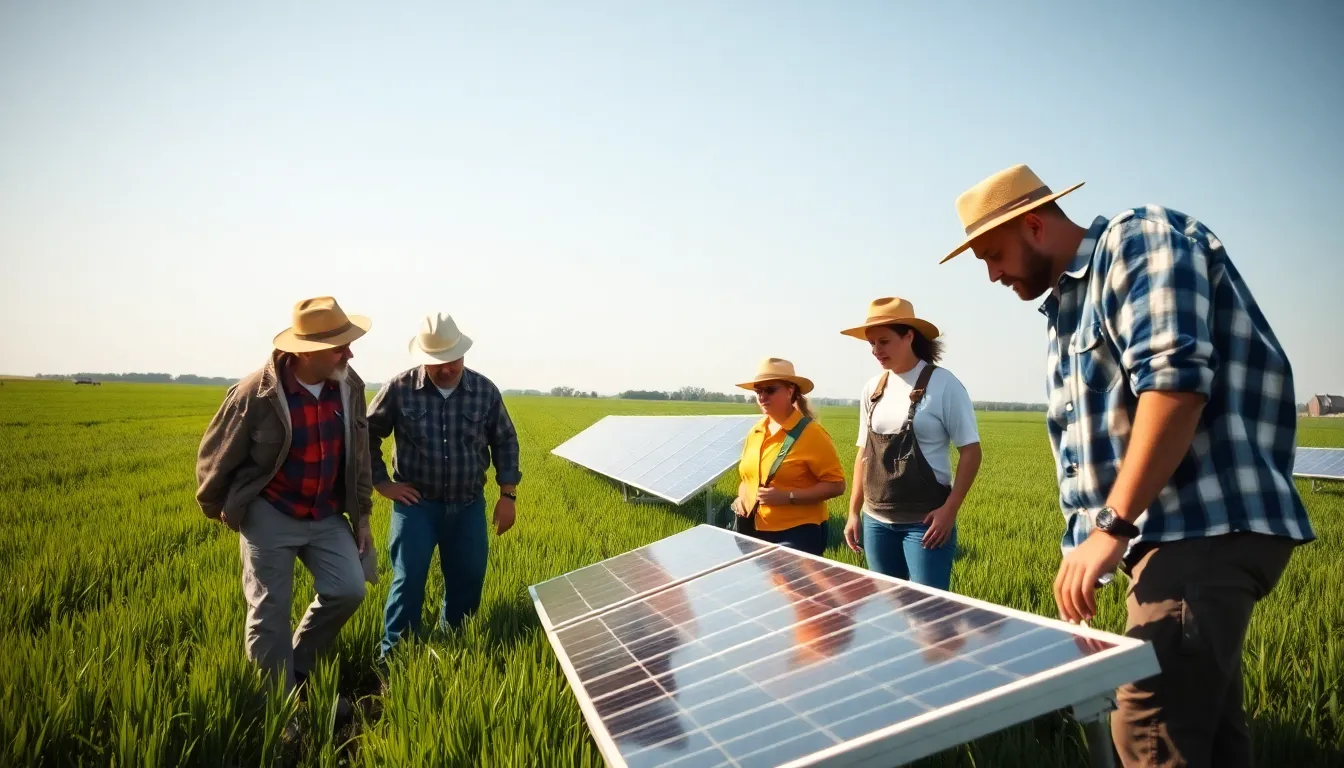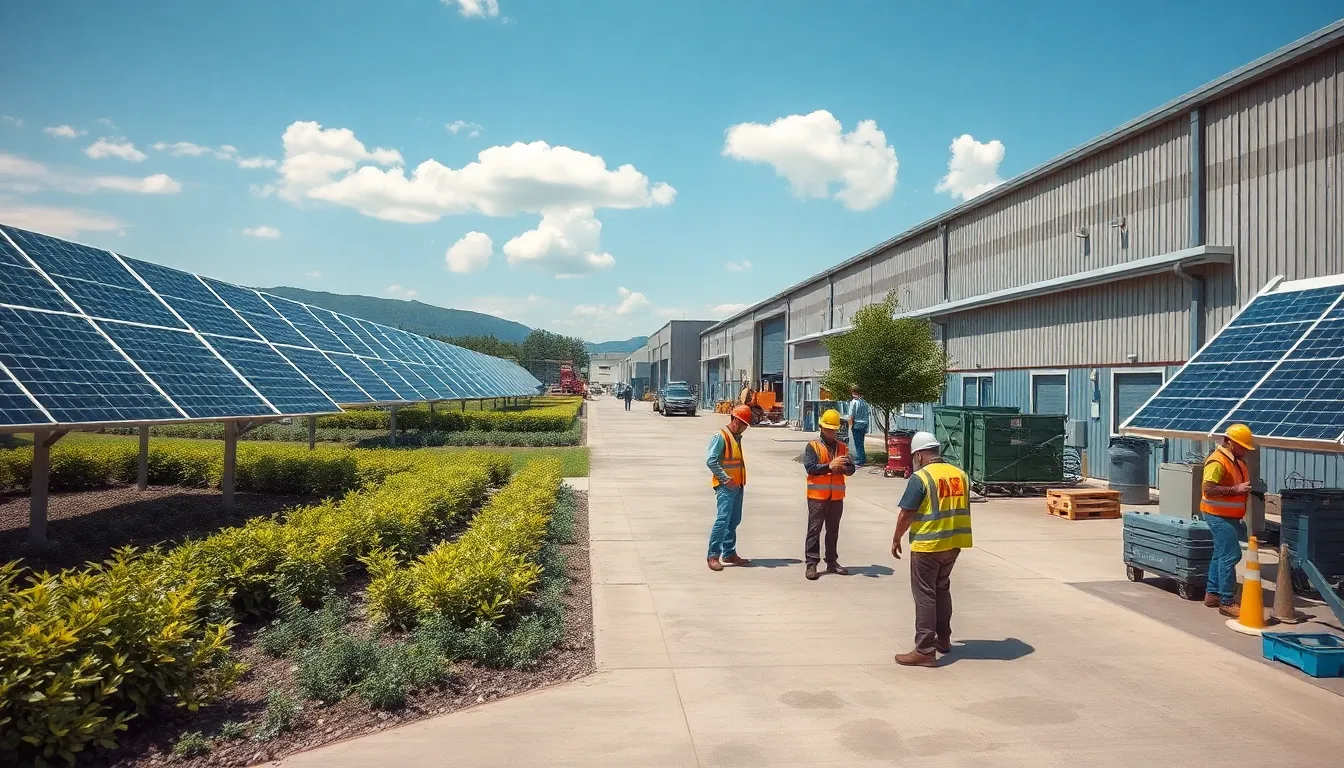Table of Contents
ToggleIn a world where the weather seems to have taken a cue from a dramatic soap opera, greenhouse gas reduction has become the hottest topic around—literally. As temperatures rise and icebergs take a leisurely swim, it’s clear that action is needed. But fear not! Reducing greenhouse gases isn’t just about turning down the thermostat and hugging trees. It’s about smart choices that can save the planet and maybe even your wallet.
Imagine a future where clean air is the norm and your kids can play outside without worrying about melting ice caps. By embracing innovative solutions and sustainable practices, everyone can play a part in this global effort. So grab your reusable grocery bags and put on your eco-warrior cape—it’s time to dive into the world of greenhouse gas reduction and discover how each small step can lead to a giant leap for mankind.
Understanding Greenhouse Gases
Greenhouse gases play a critical role in climate change. They trap heat in the atmosphere, leading to rising global temperatures.
Types of Greenhouse Gases
Carbon dioxide, methane, nitrous oxide, and fluorinated gases are the main types of greenhouse gases. Carbon dioxide accounts for about 76% of global emissions, primarily stemming from fossil fuel combustion. Methane, a potent gas, has a much higher heat-trapping ability than carbon dioxide. Its sources include livestock digestion and landfills. Nitrous oxide, contributing approximately 6% of global emissions, mainly results from agricultural activities. Fluorinated gases, although present in smaller amounts, are extremely potent and persist in the atmosphere for a long time.
Sources of Emissions
Fossil fuel usage represents a significant source of greenhouse gas emissions. Power plants and vehicles mostly rely on coal, oil, and natural gas. Agriculture also contributes substantially, particularly through livestock and fertilizer use. Industrial processes generate emissions through manufacturing activities and waste processing. Land use changes, such as deforestation, also release carbon stored in trees, exacerbating the issue. Understanding these sources aids in developing effective reduction strategies.
Importance of Greenhouse Gas Reduction

Reducing greenhouse gases plays a crucial role in combating climate change and ensuring a stable environment for future generations.
Climate Change Impacts
Climate change leads to severe weather patterns, rising sea levels, and disruptions in ecosystems. These changes threaten food security, increase health risks, and displace communities globally. According to the Intergovernmental Panel on Climate Change, failing to curb emissions could cause temperatures to rise by 1.5 degrees Celsius by 2030, intensifying these impacts. This urgency highlights the need for immediate action to reduce greenhouse gases and mitigate adverse effects.
Economic Benefits
Greenhouse gas reduction presents significant economic advantages, including job creation in renewable energy sectors. Transitioning to clean energy sources, such as solar and wind, generates approximately 11 million jobs worldwide by 2050, as reported by the International Renewable Energy Agency. Lowering emissions also leads to improved public health, resulting in reduced healthcare costs. Additionally, investing in sustainable practices can enhance energy efficiency, fostering long-term savings for households and businesses. Embracing these initiatives not only protects the environment but also boosts the economy.
Strategies for Greenhouse Gas Reduction
Implementing effective strategies significantly contributes to greenhouse gas reduction and mitigates climate change impacts. Various approaches, including renewable energy adoption, energy efficiency improvements, and carbon pricing mechanisms, play crucial roles in transitioning to a sustainable future.
Renewable Energy Adoption
Renewable energy sources include solar, wind, hydroelectric, and geothermal. Transitioning to these resources can lower dependence on fossil fuels and significantly reduce carbon emissions. In fact, solar energy alone has the potential to power approximately 20% of global electricity by 2040. Wind energy generates around 7% of the world’s electricity and is rising rapidly. Implementing these technologies can generate an estimated 11 million jobs worldwide by 2050, enhancing both economic growth and environmental sustainability.
Energy Efficiency Improvements
Improving energy efficiency in homes and industries leads to substantial energy savings and emission reductions. Lighting upgrades, appliance replacements, and insulation enhancements contribute to lower energy consumption. It’s estimated that widespread energy efficiency measures can cut energy use by 30% or more. Implementing Energy Star-rated products can also lead to financial savings on utility bills while dramatically reducing greenhouse gas emissions. As facilities adopt efficient practices, both operational costs and environmental impacts diminish, promoting a healthier planet.
Carbon Pricing Mechanisms
Carbon pricing mechanisms effectively create economic incentives for reducing emissions. Cap-and-trade systems limit total greenhouse gas emissions while allowing companies to trade emission allowances. Studies indicate that such systems can reduce emissions by 20% or more within a decade. Additionally, carbon taxes impose a direct cost on emissions, encouraging businesses and consumers to seek sustainable alternatives. Governments adopting these frameworks can generate significant revenue, reinvesting in renewable energy projects and promoting further emission reductions, ensuring a balanced approach to economic and environmental goals.
Role of Governments and Policies
Governments play a crucial role in greenhouse gas reduction through various policies and regulations. Their collaboration often extends beyond national borders, forming international agreements.
International Agreements
International agreements represent a global commitment to reduce greenhouse gas emissions. The Paris Agreement, established in 2015, unites nearly 200 nations aiming to limit global temperature rise to below 2 degrees Celsius, ideally below 1.5 degrees. These countries set nationally determined contributions (NDCs) tailored to their specific circumstances. Regular reviews of progress encourage nations to adopt more ambitious goals over time. This cooperative approach fosters accountability and innovation in addressing climate change.
National Regulations
National regulations significantly impact greenhouse gas reduction efforts. Countries develop emissions standards, reflecting their unique environmental and economic contexts. For instance, the Clean Air Act in the United States establishes limits on various pollutants, including greenhouse gases, from industrial sources and vehicles. Regulatory frameworks often include incentives for renewable energy adoption and energy efficiency improvements. Financial support for emerging technologies also drives innovation and investment in sustainable practices, promoting a shift towards a low-carbon economy.
Public Involvement and Community Action
Community involvement plays a vital role in greenhouse gas reduction. Engaging the public raises awareness and fosters collective responsibility.
Grassroots Initiatives
Grassroots initiatives empower local communities to tackle climate change. Many neighborhoods organize clean-up events, tree planting activities, and local recycling programs. These initiatives create immediate positive environmental changes. Community members often collaborate with local governments to enhance sustainability efforts. By focusing on collective action, these projects can effectively reduce emissions while promoting social cohesion. Examples of successful grassroots initiatives include urban gardens and car-free days, which encourage lower carbon footprints at the local level.
Educational Campaigns
Educational campaigns inform communities about climate-related issues and greenhouse gas reduction strategies. Schools often host workshops, while organizations distribute materials that explain the impact of emissions. Interactive events like community forums generate conversations on sustainable practices. Raising awareness increases community involvement, particularly among youth who may become lifelong advocates. Campaigns that focus on simple lifestyle changes, such as energy conservation or sustainable transportation options, empower individuals to make impactful decisions for the environment.
Addressing greenhouse gas reduction is essential for a sustainable future. By making informed choices and embracing innovative solutions, individuals and communities can contribute to significant environmental improvements. The collective effort in adopting renewable energy and enhancing energy efficiency not only mitigates climate change but also fosters economic growth and public health benefits.
As awareness grows and grassroots movements gain momentum, the potential for positive change becomes even greater. Every small action counts in the fight against climate change. Together, they can create a healthier planet for future generations, ensuring clean air and safe spaces for everyone. The time to act is now, and the path forward is filled with opportunity.







